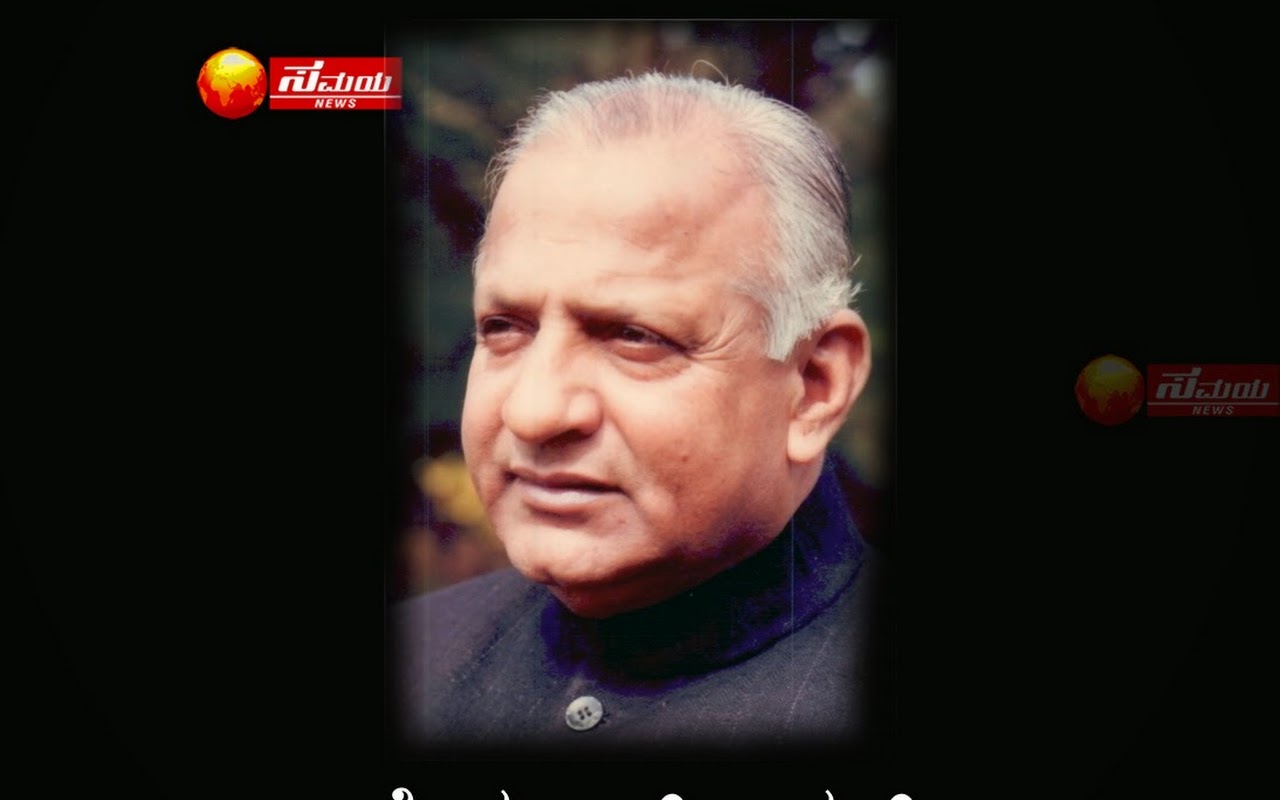ಕಾರ್ಮಿಕ ದಿನಾಚರಣೆಯ ಔಚಿತ್ಯ ಹಾಗೂ ಸಂದೇಶ | Labours day | May 1 |
"ವಿಶ್ವಕಾರ್ಮಿಕ ದಿನಾಚರಣೆ"ಯು ಪ್ರಾರಂಭವಾಗಿ 124 ವರುಷಗಳು ಕಳೆದು, ಇಂದು (ಮೇ 1, 2010) 125ನೆಯ ಆಚರಣೆ ವಿಶ್ವದಾದ್ಯಂತ ನಡೆಯುತ್ತಿರುವ ಸಂಧಿಕಾಲದಲ್ಲಿ, ಈ ದಿನಾಚರಣೆಯ ಉಗಮ, ಇತಿಹಾಸ ಹಾಗೂ ಪ್ರಸ್ತುತತೆಗಳ ಒಂದು ವಿವೇಚನೆಯು ಔಚಿತ್ಯಪೂರ್ಣವಾಗುತ್ತದೆ. ಅಂತೆಯೇ ಈ ಕಿರುಲೇಖನದಲ್ಲಿ ಒಂದೆಡೆ "ವಿಶ್ವಕಾರ್ಮಿಕ ದಿನಾಚರಣೆ"ಯ ಇತಿಹಾಸದ ಇಣುಕುನೋಟವನ್ನು ನೀಡುವುದರೊಡನೆ, ಇನ್ನೊಂದೆಡೆ, ಇದರ ಪ್ರಸ್ತುತ ಔಚಿತ್ಯದ ಪುನರಾವಲೋಕನೆಯನ್ನೂ ಮಾಡಲಾಗಿದೆ.
ಇತಿಹಾಸದ ಇಣುಕುನೋಟ:
ವೈಜ್ಞಾನಿಕ ಸಮಾಜವಾದದ ಪ್ರವರ್ತಕರಾದ ಕಾರ್ಲ್ಮಾರ್ಕ್ಸ್ ಹಾಗೂ ಫ್ರೆಡ್ರಿಕ್ ಎಂಗೆಲ್ಸ್ ಇವರು ಎಂಟು ಗಂಟೆಗಳ ಕೆಲಸದ ದಿನ ಜಾರಿಗೆ ಬರಬೇಕು ಎಂದು ತಮ್ಮ ಅನೇಕ ಬರವಣಿಗೆಗಳಲ್ಲಿ ಪ್ರತಿಪಾದಿಸಿದ್ದರು. ಜೆನೀವಾದಲ್ಲಿ ನಡೆದ ಮೊದಲನೆ ಇಂಟರ್ನ್ಯಾಷನಲ್ದಲ್ಲಿ 1866ರಲ್ಲೇ ಈ ಕುರಿತು ತೀರ್ಮಾನವನ್ನು ಕೈಗೊಳ್ಳಲಾಗಿತ್ತು ಕೂಡಾ. ಅಂತೆಯೇ 1866 ಆಗಸ್ಟ್ನಲ್ಲಿ ಅಮೆರಿಕೆಯ 60 ಸಂಘಟನೆಗಳಿಗೆ ಸೇರಿದ ಲಕ್ಷಾವಧಿ ಕಾರ್ಮಿಕರು ಕೂಡ ಈ ತೀರ್ಮಾನವನ್ನು ಕೈಗೊಂಡಿದ್ದರು. ಹೀಗಾಗಿ ಎಂಟು ಗಂಟೆಗಳ ದಿನದ ಬೇಡಿಕೆ ವಿಶ್ವದ ಎಲ್ಲ ಕಾರ್ಮಿಕರ ಬೇಡಿಕೆಯಾಗಿ ಪರಿವರ್ತಿತಗೊಂಡಿತು. ಆದರೆ, ಈ ಬೇಡಿಕೆಯನ್ನು ಸಾಧಿಸಿಕೊಳ್ಳಲು ಅಮೆರಿಕೆಯ ಚಿಕಾಗೋ ನಗರದ ಹೇಮಾರ್ಕೆಟ್ ಸ್ಕ್ವಯರ್ದಲ್ಲಿ ನಡೆದ ಹೋರಾಟ ಜಾಗತಿಕ ಕಾರ್ಮಿಕ ಹೋರಾಟಗಳ ಇತಿಹಾಸದಲ್ಲಿ ಕೆಂಪು ಅಕ್ಷರ ದಿನವಾಗಿ ಪರಿಣಮಿಸಿತು.
1886 ಮೇ 1, ಕಾರ್ಮಿಕ ಹೋರಾಟಗಳ ಇತಿಹಾಸದಲ್ಲಿ ಒಂದು ಮಹತ್ವದ ಘಟ್ಟ. ಆ ದಿನ ಅಮೆರಿಕೆಯಲ್ಲಿ ಸುಮಾರು ಐದು ಲಕ್ಷ ಜನ, ಎಂಟು ಗಂಟೆಯ ಕೆಲಸದ ದಿನಕ್ಕಾಗಿ ಪ್ರದರ್ಶನವನ್ನು ಹೂಡಿದ್ದರು. ಇವರಲ್ಲಿ ಸುಮಾರು ಎರಡು ಲಕ್ಷ ಜನ ಮುಷ್ಕರವನ್ನು ಹೂಡಿದ್ದರು. ಅಂದು ಚಿಕಾಗೋ ನಗರದಲ್ಲೇ 80 ಸಾವಿರ ಕಾರ್ಮಿಕರು ಮುಷ್ಕರವನ್ನು ಹೂಡಿದ್ದರು. ಈ ಚಳವಳಿಯನ್ನು ದಮನಗೊಳಿಸಲು ಪ್ರತ್ಯೇಕವಾಗಿ ಖಾಸಗಿ ಗೂಂಡಾ ಕಂಪೆನಿಗಳು ದೌರ್ಜನ್ಯವನ್ನು ನಡೆಸಿದ್ದವು. ಇದಕ್ಕೆ ಒಂದು ಉದಾಹರಣೆ, ಪಿಂಕರ್ಟನ್ ಕಂಪನಿ. ಇದು ಹೇಳಿತ್ತು: "ಈ ಕಾರ್ಮಿಕರಿಗೆ ತುಪಾಕಿಗಳಿಂದ ಹಬ್ಬದ ಊಟ ಬಡಿಸಬೇಕು" ಎಂದು. "ಕಾರ್ಮಿಕ ವರ್ಗದ ಒಂದು ಅರ್ಧಭಾಗವನ್ನು ಕೊಲ್ಲಿಸಲು, ಇನ್ನೊಂದು ಅರ್ಧ ಭಾಗವನ್ನು ಬಾಡಿಗೆಗೆ ಪಡೆಯಬಲ್ಲ ಸಾಮರ್ಥ್ಯ ನನಗಿದೆ" ಎಂದು ಓರ್ವ ದೊಡ್ಡ ಏಕಸ್ವಾಮ್ಯ ಬಂಡವಾಳಶಾಹಿಯಾಗಿದ್ದ ಜಾಯ್ಗೌಲ್ಡ್ ಹೇಳಿದ್ದ. ಈ ಬಗೆಯಾದ ಬಂಡವಾಳಶಾಹಿಗಳ ದೌರ್ಜನ್ಯವನ್ನು ಎದುರಿಸಿ ಅಮೆರಿಕೆಯ ಕಾರ್ಮಿಕವರ್ಗ ಹೋರಾಟಕ್ಕೆ ಧುಮುಕಿತ್ತು.
ಈ ಬೃಹತ್ ಚಳವಳಿಯನ್ನು ಹತ್ತಿಕ್ಕಲು ಬಂಡವಾಳಶಾಹಿ ವರ್ಗ ಹಾಗೂ ಅಮೆರಿಕನ್ ಸರ್ಕಾರ ಒಟ್ಟು ಕೂಡಿಕೊಂಡಿತ್ತು. ಮೇ 1ರಂದು ಪ್ರಾರಂಭಮಾಡಿದ್ದ ಚಳವಳಿ ಮುಂದುವರಿದಿತ್ತು; ಮೇ 3ರಂದು ಬಂಡವಾಳಶಾಹಿಗಳು ಈ ಮುಷ್ಕರವನ್ನು ಮುರಿಯಲು, ಅದರಲ್ಲಿಯ ಒಂದು ಗುಂಪನ್ನು ಇನ್ನಿತರರ ಮೇಲೆ ಸಂಘರ್ಷ ಮಾಡಲು ಪ್ರೇರೇಪಿಸಿದ್ದರು. ಈ ಸಂಘರ್ಷವನ್ನು ಹತ್ತಿಕ್ಕುವ ನೆಪಹೂಡಿ, ಪೋಲೀಸರು ಆರು ಕಾರ್ಮಿಕರನ್ನು ಗುಂಡಿಕ್ಕಿ ಕೊಂದಿದ್ದರು. ಈ ಪೋಲೀಸ್ ದೌರ್ಜನ್ಯವನ್ನು ಪ್ರತಿಭಟಿಸಲು, ಚಿಕಾಗೋ ನಗರದ ಹೇಮಾರ್ಕೆಟ್ ಸ್ಕ್ವಯರ್ದ ಬೃಹತ್ ಮತಪ್ರದರ್ಶನವನ್ನು ನಡೆಸಲಾಗಿತ್ತು. ಈ ಸಭೆಯು ರಾತ್ರಿ 10 ಗಂಟೆಗೆ ಪೂರ್ಣಗೊಳ್ಳುತ್ತಿದ್ದಂತೆ, ಹಿಂಭಾಗದಿಂದ ಪೋಲೀಸ್ ಏಜೆಂಟೊಬ್ಬನು ಕಾರ್ಮಿಕರ ಮೇಲೊಂದು ಬಾಂಬನ್ನು ಎಸೆದಿದ್ದನು. ಇದರಿಂದ ಗೊಂದಲ ಉಂಟಾಗಿ, ಕತ್ತಲಲ್ಲಿ ಸಿಕ್ಕಾಪಟ್ಟೆ ಗುಂಡಿಕ್ಕಲು ಉದ್ಯುಕ್ತರಾದರು. ಇದರ ಪರಿಣಾಮವಾಗಿ ಏಳೆಂಟು ಕಾರ್ಮಿಕರು ಸ್ಥಳದಲ್ಲೇ ಅಸುನೀಗಿದ್ದರು. ಮೂವತ್ತು-ನಾಲ್ವತ್ತು ಮಂದಿ ಕಾರ್ಮಿಕರು ಗಾಯಗೊಂಡಿದ್ದರು. ಕಾರ್ಮಿಕರ ಕೋಪ ಕಟ್ಟೆ ಒಡೆದು, ಘರ್ಷಣೆಗೆ ಇಳಿದರು. ಒಬ್ಬ ಪೋಲೀಸ್ ಸ್ಥಳದಲ್ಲೇ ಮೃತಪಟ್ಟಿದ್ದ; ತೀವ್ರವಾಗಿ ಗಾಯಗೊಂಡಿದ್ದ ಏಳು ಜನ ಪೋಲೀಸರು ನಂತರ ಮರಣಹೊಂದಿದ್ದರು.
ಈ ಸಭೆಯಲ್ಲಿದ್ದ ಪ್ರಮುಖ ನಾಯಕರೆಂದರೆ, ಆಲ್ಬರ್ಟ್ ಪಾರ್ಸನ್ಸ್ ಹಾಗೂ ಅಗಸ್ಟ್ ಸ್ಟೈಸ್. ಆದರೆ ಅಮೆರಿಕನ್ ಸರ್ಕಾರ ಎಂಟು ಜನ ಕಾರ್ಮಿಕ ನಾಯಕರ ಮೇಲೆ ಖೊಟ್ಟಿ ಕೇಸನ್ನು ದಾಖಲಿಸಿತ್ತು. ತೋರಿಕೆಯ ವಿಚಾರಣೆಯಲ್ಲಿ ಇವರಲ್ಲಿ ಏಳು ಜನರಿಗೆ ಗಲ್ಲುಶಿಕ್ಷೆಯನ್ನು, ಇನ್ನೊಬ್ಬನಿಗೆ ಹದಿನೈದು ವರುಷಗಳ ಜೈಲುವಾಸವನ್ನು ವಿಧಿಸಲಾಯಿತು. ಈ ರೀತಿ ಶಿಕ್ಷೆಗೆ ಒಳಗಾಗಿದ್ದ ಕಾರ್ಮಿಕ ನಾಯಕವೀರರು ಹೇಳಿದ್ದರು - "ನಮ್ಮನ್ನು ಗಲ್ಲಿಗೆ ಏರಿಸುವುದರಿಂದ ಕಾರ್ಮಿಕ ಚಳವಳಿಯನ್ನು ದಮನಗೊಳಿಸಬಹುದೆಂದು ಭಾವಿಸಿದ್ದರೆ ಅದು ಭ್ರಮೆ ಮಾತ್ರ. ನೀವು ಇದರಿಂದ ಒಂದು ಕಿಡಿಯನ್ನು ಆರಿಸಬಹುದು. ಆದರೆ ನಿಮ್ಮ ಮುಂದೆ, ನಿಮ್ಮ ಸುತ್ತು ಈ ಜ್ವಾಲೆ ಉರಿಯುತ್ತಿದೆ. ಈ ದಾವಾಗ್ನಿಯನ್ನು ನೀವು ಆರಿಸಲಾರಿರಿ" ಎಂದು.
ಗಲ್ಲುಶಿಕ್ಷೆಗೆ ಒಳಗಾಗಿದ್ದವರಲ್ಲಿ ಒಬ್ಬನಾದ ಆಗಸ್ಟ್ ಸ್ಟೈಸ್ ಗವರ್ನರ್ಗೆ ಒಂದು ಪತ್ರವನ್ನು ಬರೆದು ಹೇಳಿದ್ದ. "ನೀವು ಮಾಡುತ್ತಿದ್ದುದು ಶಾಸನಬದ್ಧ ಕೊಲೆ. ನಾನು ಆ ಸಭೆಯಲ್ಲಿದ್ದ ತಪ್ಪಿಗಾಗಿ ನನ್ನನ್ನು ಗಲ್ಲಿಗೆ ಏರಿಸುತ್ತಿದ್ದೀರಿ. ಇದೇ ಅಪರಾಧವಾದರೆ, ನನ್ನ ಹೆಂಡತಿ ಹಾಗೂ ನನ್ನ ಮಕ್ಕಳೂ ಆ ಸಭೆಯಲ್ಲಿದ್ದರು. ಅವರಿಗೂ ಗಲ್ಲುಶಿಕ್ಷೆ ಕೊಡಿ" ಎಂದು. ಅಂತೆಯೇ ಅವನು ತನ್ನ ಹೆಂಡತಿಗೆ ಬರೆದ ಪತ್ರದಲ್ಲಿ ಹೇಳಿದ್ದ - "ನಾನು ಇಲ್ಲದಿದ್ದರೂ ಸೋಷಲಿಸಮ್ ಮಹದಾಶಯದ ಸಾಧನೆಗಾಗಿ ಈ ಚಳವಳಿಯನ್ನು ನೀನು ಮುಂದುವರಿಸಬೇಕು" ಎಂದು. ಆಗಸ್ಟ್ ಸ್ಟೈಸ್ನ ಹೆಂಡತಿ ಲೂಸಿಯು, ಪತಿವಾಕ್ಯದಂತೆ ತನ್ನ ತೊಂಭತ್ತನೆಯ ವಯಸ್ಸಿನವರೆಗೆ ಸಮಾಜವಾದೀ ಚಳವಳಿಗಳಲ್ಲಿ ಭಾಗವಹಿಸಿ, 7-3-1942ರಲ್ಲಿ ನಿಧನಹೊಂದಿದ್ದಳು. ಆಕೆ ಸಾಯುವ ಕೆಲ ತಿಂಗಳ ಹಿಂದೆ, ಹೇಮಾರ್ಕೆಟ್ ಸ್ಕ್ವಯರ್ದಲ್ಲಿ ನಡೆದ ಮೇಡೇ ರ್ಯಾಲಿಯಲ್ಲಿ ಭಾಷಣಮಾಡಿ, ಚರಿತ್ರೆಯನ್ನು ನಿರ್ಮಿಸಿದ್ದಳು.
ಈ ಏಳು ನಾಯಕರನ್ನು ಗಲ್ಲುಗೇರಿಸಲು ನಿಗದಿಪಡಿಸಿದ ಮುನ್ನಾದಿನ ನ್ಯೂಯಾರ್ಕ್ ನಗರದಲ್ಲಿ ಏಳುಸಾವಿರ ಕಾರ್ಮಿಕರು ಪ್ರತಿಭಟನಾ ರ್ಯಾಲಿಯನ್ನು ಮಾಡಿ, "ನ್ಯಾಯಾಲಯ ಮಾಡುತ್ತಿರುವ ಈ ಕೊಲೆಯನ್ನು ನಾವು ಪ್ರತಿಭಟಿಸುತ್ತೇವೆ" ಎಂದು ಆಗಸದ ಕಿವಿಪಟಲ ಹರಿಯುವಂತೆ ಕೂಗಿದ್ದರು. ಆ ದಿನವೇ ಗಲ್ಲುಶಿಕ್ಷೆಯನ್ನು ಎದುರಿಸಬೇಕಾಗಿದ್ದ ಲಿಂಗ್ ತನ್ನ ಜೈಲು ಕೊಠಡಿಯಲ್ಲೇ ಅಸುನೀಗಿದ್ದ. ಆ ದಿನವೇ ಫೀಲ್ಡನ್ ಹಾಗೂ ಷ್ಯಾಬ್ ಇವರಿಗೆ ವಿಧಿಸಿದ್ದ ಗಲ್ಲುಶಿಕ್ಷೆಯನ್ನು ಜೀವಾವಧಿ ಶಿಕ್ಷೆಯಾಗಿ ಪರಿವರ್ತಿಸಿದಂತೆ ಗವರ್ನರ್ ಒಂದು ಅಧಿಕೃತ ಪ್ರಕಟಣೆಯನ್ನು ಹೊರಡಿಸಿದ್ದು ಗಮನಾರ್ಹ. ಇನ್ನುಳಿದ ನಾಲ್ವರನ್ನು ದಿ|| 11-11-1887ರಂದು ನೇಣುಕಂಬಕ್ಕೆ ಏರಿಸಲಾಯಿತು. ಈ ಎಲ್ಲ ಕಾರ್ಮಿಕ ನಾಯಕರ ತ್ಯಾಗ ಅಮರವಾಗಿದೆ, ಈ ರೋಮಾಂಚಕಾರಿ ಇತಿಹಾಸ ಜಾಗತಿಕ ಕಾರ್ಮಿಕ ಆಂದೋಲನದ ಇತಿಹಾಸದಲ್ಲಿ ರಕ್ತಾಕ್ಷರಗಳಲ್ಲಿ ಬರೆದಿಡಲಾದ ಅಮರ ದಾಖಲಾಗಿದೆ. ವಿಶ್ವ ಕಾರ್ಮಿಕರ ನಿರಂತರ ಸ್ಫೂರ್ತಿಯ ಸೆಲೆಯಾಗಿದೆ.
ಮೇ ದಿನಾಚರಣೆ - ಎಂಟು ಗಂಟೆಗಳ ಕೆಲಸದ ದಿನದ ಹೋರಾಟ - ಇದರ ಮಹತ್ವವನ್ನು ವಿಶ್ವದಲ್ಲೇ ಪ್ರಥಮ ಸಮಾಜವಾದಿ ರಾಷ್ಟ್ರ ನಿರ್ಮಾಪಕ, ರಷ್ಯಾ ಕ್ರಾಂತಿಕಾರಿ ನಾಯಕ ಲೆನಿನ್ ಬಣ್ಣಿಸಿದ್ದು ಹೀಗೆ: "ಮೇ ದಿನಾಚರಣೆ ಒಂದು ಸಾಂಪ್ರದಾಯಿಕ ಕ್ರಿಯೆಯಲ್ಲ. ಶೋಷಿತವರ್ಗಗಳ ಹಾಗೂ ದೇಶಗಳ ವಿಮೋಚನೆಗಾಗಿ ನಡೆಸಬೇಕಾದ ಕ್ರಾಂತಿಕಾರಿ ಹೋರಾಟಗಳು, ರಾಜಕೀಯ ಹೋರಾಟಗಳು, ಸಾಮ್ರಾಜ್ಯಶಾಹಿ ವಿರೋಧಿ ಅಂತಾರರಾಷ್ಟ್ರೀಯ ಕಾರ್ಮಿಕವರ್ಗದ ಹೋರಾಟ, ಇವುಗಳಿಗಾಗಿ ಅವಶ್ಯವಾದ ಚೈತನ್ಯವನ್ನು ಕಾರ್ಮಿಕರು ಬೆಳೆಸಿಕೊಳ್ಳಬೇಕಾದ ಮಹತ್ವದ ದಿನ ಇದು. ತಮಗೆ ಸಂಬಂಧಿಸಿದ ದಿನನಿತ್ಯದ ಬೇಡಿಕೆಗಳಿಗಾಗಿ ಸಣ್ಣ ಸಣ್ಣ ಬೇಡಿಕೆಗಳಿಗಾಗಿ ಆಂದೋಲನ ನಡೆಸುವ ಸಂದರ್ಭವಲ್ಲ ಇದು. ಇಂಥವು ವರ್ಷಾದ್ಯಂತ ಇದ್ದೇಇರುತ್ತವೆ. ಕಾರ್ಮಿಕರು ಈ ಅಂತರವನ್ನು ಅರಿತುಕೊಂಡು ಮೇ ದಿನಾಚರಣೆಯನ್ನು ಆಚರಿಸುವುದು ಅತ್ಯವಶ್ಯ" ಎಂದು.
ಪ್ರಚಲಿತ ಪ್ರಸ್ತುತತೆ
"ವಿಶ್ವದ ಕಾರ್ಮಿಕರೇ ಒಂದಾಗಿರಿ, ಒಂದಾಗಿರಿ" - ಇದು ವಿಶ್ವಕಾರ್ಮಿಕ ದಿನಾಚರಣೆಯ ಧ್ಯೇಯವಾಕ್ಯ. ಹಾಗಾದರೆ ಏತಕ್ಕಾಗಿ ವಿಶ್ವದ ಕಾರ್ಮಿಕರು ಒಂದಾಗಬೇಕು?" ಎಂಬ ಪ್ರಶ್ನೆಗೆ ಉತ್ತರ - "ವಿಶ್ವದಾದ್ಯಂತ ಸಮಾಜವಾದೀ ಸಮಾಜದ ಸ್ಥಾಪನೆಗೆ" ಎಂದು. 2008ರಲ್ಲಿ ಅಮೆರಿಕೆಯಲ್ಲಿ ತೀವ್ರ ಆರ್ಥಿಕ ಮುಗ್ಗಟ್ಟು ಸಂಭವಿಸಿ, ಇದು ವಿಶ್ವದಾದ್ಯಂತ ಹಬ್ಬಿ, ಬಂಡವಾಳಶಾಹಿ ಹಾಗೂ ಸಾಮ್ರಾಜ್ಯಶಾಹಿ ವ್ಯವಸ್ಥೆಯು ಕುಸಿಯುತ್ತಿರುವುದಕ್ಕೆ ಸಾಕ್ಷ್ಯವನ್ನು ಒದಗಿಸಿದೆ. ಇದು ಸಮಾಜವಾದೀ ಸಾಮಾಜಿಕ ವ್ಯವಸ್ಥೆಯ ಸ್ಥಾಪನೆಗೆ ಯೋಗ್ಯಕಾಲವಾಗಿದ್ದು, ವಿಶ್ವದ ಕಾರ್ಮಿಕರು ಒಂದಾಗಿ ಈ ಕಾರ್ಯಕ್ಕೆ ಅಣಿಯಾಗಬೇಕಾಗಿದೆ. ಅಂತೆಯೇ ಭಾರತದಲ್ಲಿ ಸ್ವಾತಂತ್ರ್ಯಾನಂತರ 62 ವರುಷಗಳು ಕಳೆದರೂ ಪ್ರಜಾಸತ್ತೆಯ - ಸಮಾಜವಾದದ ಸಂವಿಧಾನದ ಮುಖವಾಡ ಧರಿಸಿ, ಬಂಡವಾಳಶಾಹಿ - ಸಾಮ್ರಾಜ್ಯಶಾಹಿ ಶೋಷಣಾಮಯ ವ್ಯವಸ್ಥೆಯನ್ನು, ಅಸಮಾನತೆ-ಅನ್ಯಾಯ-ಶೋಷಣೆಗಳನ್ನು ಶಾಶ್ವತಗೊಳಿಸುತ್ತಿರುವ ಭಾರತೀಯ ಆಳುವವರ್ಗಗಳ (ಬಂಡವಾಳಶಾಹಿ - ಭೂಮಾಲಕವರ್ಗಗಳ) ಆಳ್ವಿಕೆಯನ್ನು ಕೊನೆಗೊಳಿಸಲು, ಭಾರತದಲ್ಲಿಯ ಶೋಷಿತ ಕಾರ್ಮಿಕರು ಹಾಗೂ ಇತರ ಎಲ್ಲ ಶೋಷಿತ ವರ್ಗಗಳು ಒಂದಾಗಿ, ಈ ಶೋಷಕವರ್ಗದ ಅಮಾನುಷ ಆಡಳಿತಕ್ಕೆ ಅಂತ್ಯಹಾಡದಿದ್ದರೆ, ಸಂವಿಧಾನದಲ್ಲಿ ಘೋಷಿಸಲ್ಪಟ್ಟಿರುವ ಸಮಾಜವಾದವು ಕೇವಲ ಕಾಗದದ ಆಶ್ವಾಸನೆಯಾದೀತೇ ಹೊರತು, ಸಾಮಾಜಿಕ ವಾಸ್ತವಿಕತೆಯಾಗಲಾರದು. ಅಂತೆಯೇ ಈ ಮೇ ದಿನಾಚರಣೆಯ ಸಂದೇಶ, ಶೋಷಿತ ಕಾರ್ಮಿಕರು ಒಗ್ಗೂಡಿ, ವರ್ಗಹೋರಾಟಕ್ಕೆ ಮುಂದಾಗಿ, ಸಮಾಜವಾದಿ ಸಮಾಜ ಸ್ಥಾಪನೆಗೆ ಕಂಕಣಬದ್ಧರಾಗಬೇಕು ಎಂಬುದಾಗಿದೆ.

